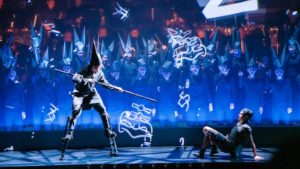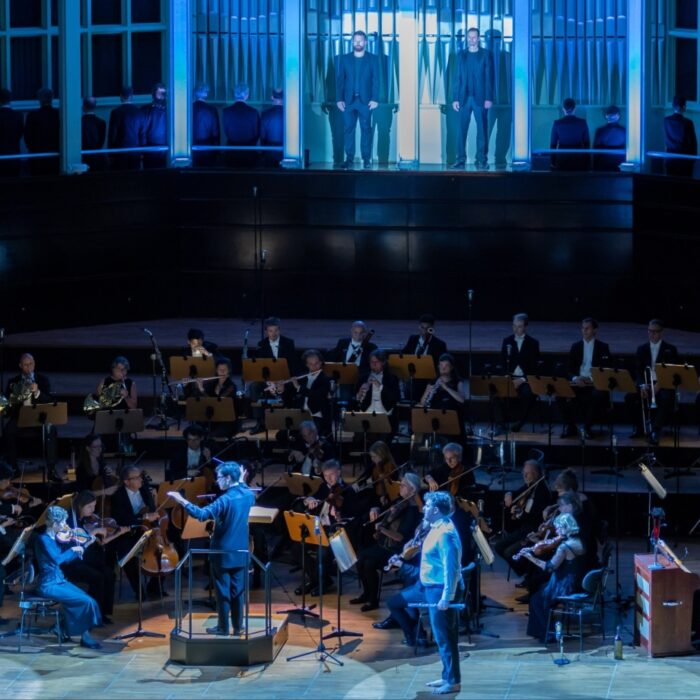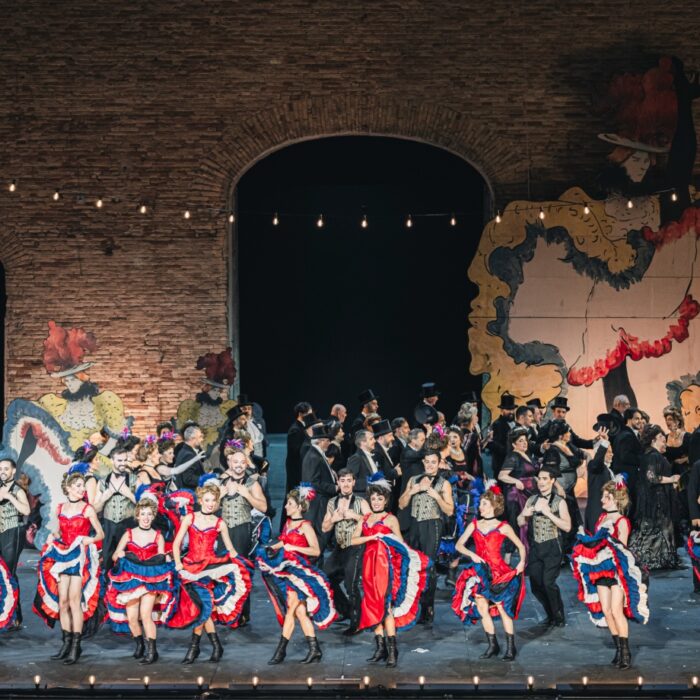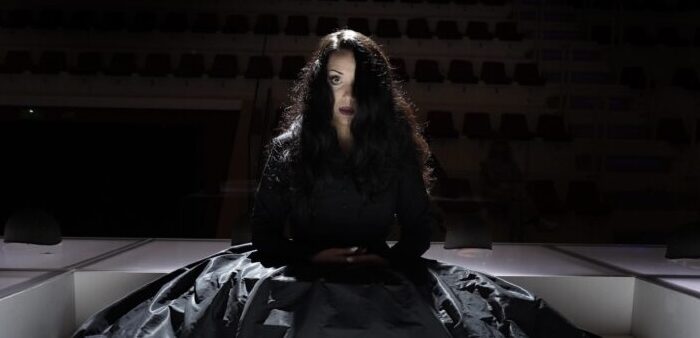
San Francisco Symphony Orchestra 2019 Review: L’Enfant et les Sortileges
Isabel Leonard Shines In Magical Performance of Ravel’s Masterwork
By Lois Silverstein(Credit: Brandon Patoc)
Fantasy. Enchantment. The Land of Dreams.
So it was in San Francisco on the last day of June with Ravel’s “L’ Enfant et des Sortileges” at Davies Symphony Hall and the Annual San Francisco Gay Pride Parade.
Just getting to the concert hall was a multi-colored, multi-media challenge, long-before the audience was presented with the anime-enhanced multi-chorus semi-staged opera. The fairy-tale atmosphere renowned in the city was highlighted by rainbow-bewigged-be-flagged-be-costumed patriots of over 1,000,000 persons who thronged every neighboring street and paved the way to the more organized but no less dynamic spectacular that in the next hours filled Davies’ Hall. Ceiling to floor, wall-to-wall, we were enwrapped with wonder and music that matched the display.
And indoors, it was all French.
Ravel’s Masterpiece
What some call Ravel’s most extraordinary musical creation was introduced by French chamber music: Debussy, Faure and Ravel. Piano solo, piano four hands, quartet, solo voice and piano, elegantly performed, atmospheric, settled the diverse audience into Monet-style water-lily landscape of early 20thcentury.
Following this, we were treated to the opera.
First performed in 1925, Ravel’s creation is thoughtful as well as ravishing. The story of a child rebelling against the social strictures imposed on his far-flying imagination and energy is hardly new, though Ravel’s somewhat quaint “crimes” delights – i.e., spilling ink on the floor, or breaking a Chinese Tea Cup, tame compared to today’s rebellious actings-out.
Still, “Maman” is peeved and subjects the child to exile in his room. Many of us can easily relate to this. However, his imagination tops many of ours, with the coming to “life” of Armchair, Fire, Squirrel, and Dragonfly among Ravel’s own imaginings. The resulting music immersed us in eloquence, beauty and charm.
The performance featured three choruses – the San Francisco Symphony Chorus, the Symphony Boys’ and Girls’ Choruses, the San Francisco Symphony Orchestra – as well as a cast of wonderful singers, of different fachs and playing anthropomorphized animals led by mezzo-soprano Isabel Leonard as The Child. These were led by Martyn Brabbins, Music Director of the English National Opera. Brabbins had become a substitute for Michael Tilson Thomas, withdrawing for medical reasons.
Elan
Brabbins conducted with “elan” and skill. The range of orchestral instrumentation from full complement of woodwinds, percussion, including cheese-grater played with triangle stick, woodblock, xylophone, celesta, harp, lutheal, whistle and more plus strings and singers. The orchestra stayed behind a royal blue skrim onto which a remarkable display of magic-extravagance of remarkable anime projections, created by Gregoire Point and Christophe Chaupin began with the downbeat.
It was far more exquisite than any Fourth of July display, plus it had the magic of music rather than the bombast. Costumes and stage design came from the artistic hand of Thibault Vancraenenbroeck and direction from Luke Kritzeck, known for his extensive work with theater, dance, music, circuses and opera.
The narrative, through the music, the orchestral “flow,” the singers, and the “fireworks” continued in tandem. One didn’t transpire without the other. Remarkable coordination, technical skill and felicitous sound rang out from the outset; never was there a gap.
The Outstanding Isabel Leonard & Beyond
Leonard’s performance was outstanding. “That’s Isabel Leonard?” was heard when the “young boy” appeared in his backwards cap, shorts and shirt. S/he moved flexibly across the stage, complete with feisty childlike-expression and whiny rebellious tones a boy with a true parental challenge.
A resonant, full-bodied, rich, sonorous, palate of colors and communication was at her vocal command. In addition to her musical and dramatic skill, Leonard’s brought great joy to the role, which totally infectious. No question this role rounds out her current repertoire with another plum part.
The cast of characters from Cat to Armchair to Teapot to Fire came to life alongside of her in more than an engaging way.
Stage Director James Bonas brought out the most whimsical and the most enchanting of Ravel’s music in the duets and ensembles. Anna Christy played a most engaging and sonorous Fairy Princess. Her voice caressed and coaxed as she romanced her young suitor; it soared and balanced with moments of great beauty in their duet and admission of love. She performed as Fire as well, her voice matching the luminous color of the projection as she sang. It was thrilling.
Ginger Costa-Jackson meowed her way to romance with Black Cat Bass-Baritone Kelly Markgraf. Costa-Jackson performed a solo earlier in the program, Ravel’s “Noel.” Along with her intensely passionate performance, transcending the boundaries of traditional carols, it exuded rich, dramatic color.
Jennifer Johnson Cano, played the Mama with aplomb. Other notable singers included Marnie Breckenridge, Nikki Einfeld, Ben Jones, Michael Todd Simpson, and Ben Jones.
The Choruses amplified the melodic strands in a seamless arc. The blending of youthful with mature voices plus the rich coloration of instrumentation emphasized the seamlessness of the dreamscape come to life. Never did we lose the threads of the fantastic nor question which layer of reality to which we were relegated. Here we were in “Neverwhere,” as Neil Gaiman called it, and yet “Everywhere,” “Anywhere,” and “All-Where.’’ Dragonfly, Squirrel, Teapot, Armchair – all were brought to life similar to Prokofiev’s “Peter and the Wolf,” Saint-Saëns “Carnival of the Animals” in the musical repertoire, and Rowling’s “Harry Potter” and Tolkien’s “Hobbit.” These are worlds full of long-lasting charm we never tire of exploring.
It was a truly magical evening that undoubtedly left every person in the hall transfixed.


